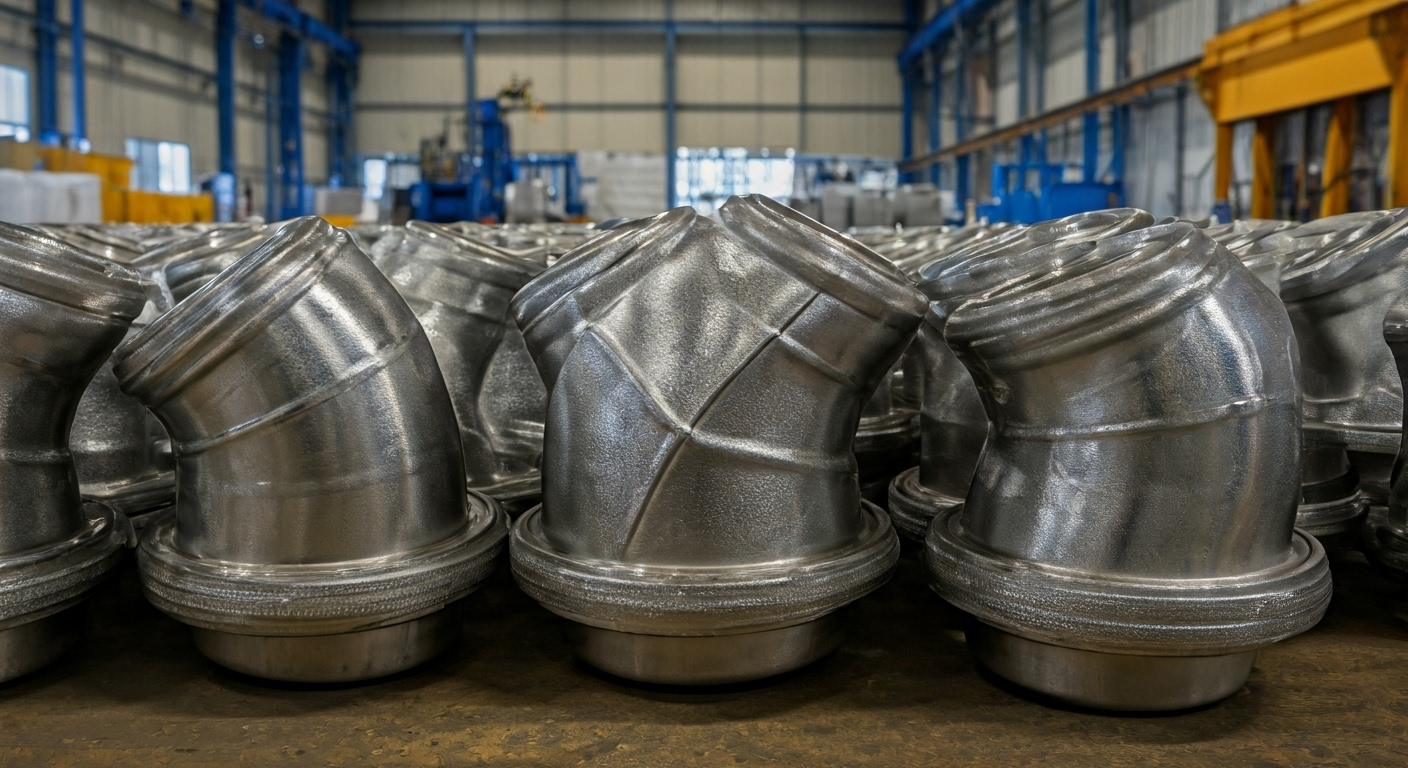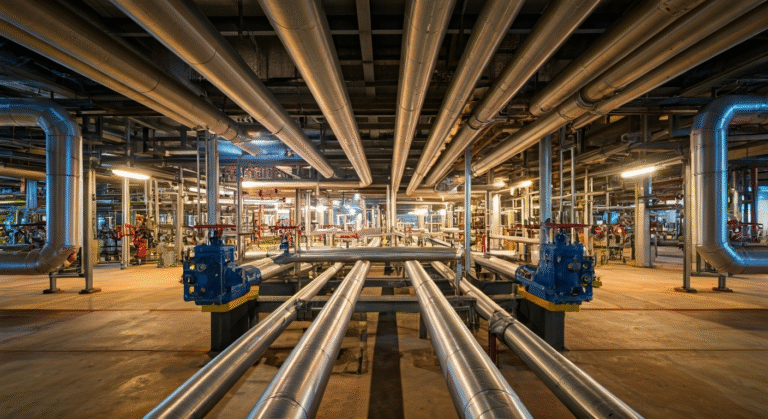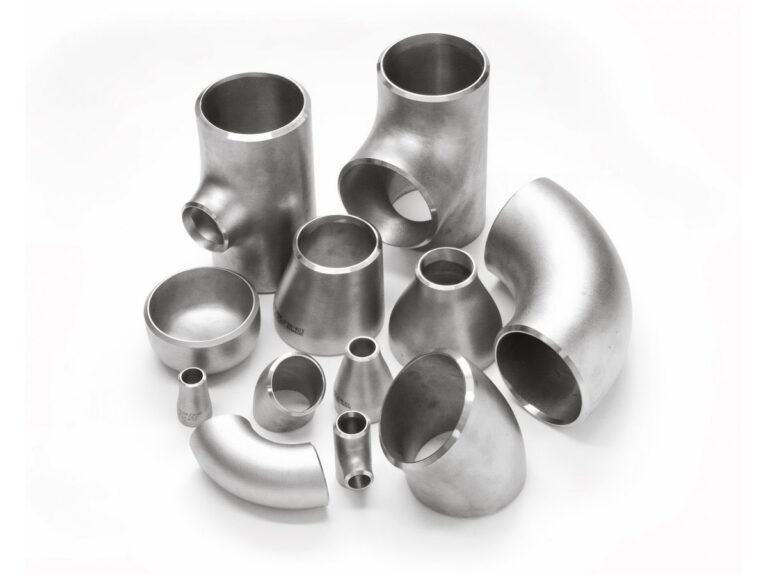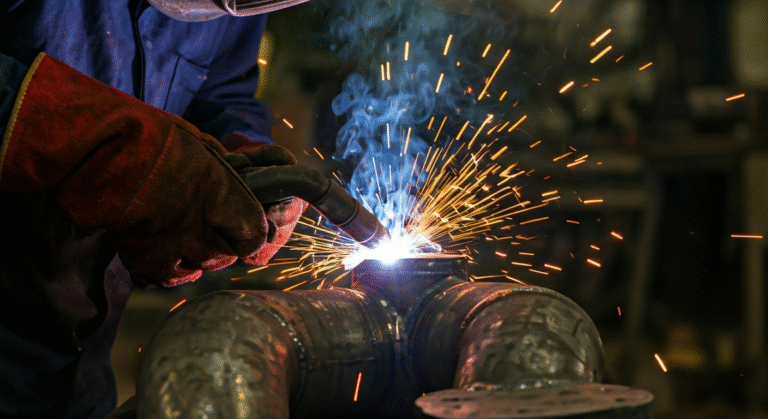-
Zona industrial de Yinzhuang, concelho de Mengcun, cidade de Cangzhou, província de Hebei, China

Top Suppliers for Quality Stainless Steel Elbow Options

Principais destaques
- Stainless steel elbows are essential pipe fittings offering reliable corrosion resistance, especially in harsh industrial environments across Australia.
- A variety of stainless steel grades, including 304 and 316, are available to suit different specifications and plumbing needs.
- These elbows come in a broad range of sizes and types, such as long and short radius, butt-weld, threaded, and insert fittings.
- Top Australian suppliers provide quality stainless steel elbows along with brass options and diverse specifications.
- The right elbow choice ensures safe flow direction, leak prevention, and extended service life for piping systems.
Introdução
Choosing the right stainless steel elbows is very important for anyone using stainless steel fittings and pipe fittings. These elbows be a big part of strong piping systems. The right choice makes sure your system stays safe and lasts a long time. This holds true in tough places like plumbing, factories, or special jobs. Using a good stainless steel elbow helps stop leaks. It also stands up well to corrosion. There are many types and grades of stainless steel available in Australia. To get reliable and long-lasting pipe fittings, you need to first understand which options work best for what you need.
Understanding Stainless Steel Elbows and Their Importance in Australian Industries

Stainless steel elbows are needed in Australian industries. The fittings are strong and can stand up to tough conditions and corrosion. You will find that these elbows help change the way things flow in pipes. This is why they are important for safe and good work when putting in piping.
Many industries use stainless steel, like the energy and petrochemicals sector. People use this because it lasts a long time. Knowing more about these fittings and why they are needed can help you choose better for your next project. Let’s take a closer look at how these elbows work and their main jobs in different areas.
Defining Stainless Steel Elbows: Function and Use in Piping Systems
Stainless steel elbows are pipe fittings that change the direction of pipes. They come in angles like 45°, 90°, and 180°. They are strong and be used a lot in the plumbing and commercial piping systems. Most have female threads on each end. So, these fittings can screw right onto a male connection or other fittings.
The main use for a stainless steel elbow is to make a tight and safe bend in pipes with little friction loss. The elbows help keep up pressure in the system and stop leaks. John Matthews, who knows the industry well, says, “The right elbow fitting is key to stopping pressure drop and making sure fluid moves well.” You can find different types. These include butt-weld, threaded, and insert elbows. Each is made to match special needs.
You will see stainless steel elbows changing direction for water pipes, chemical systems, and energy pipes. The fittings are good at stopping rust, so they work well in places with tough weather or chemicals. Stainless steel, pipe fittings, and corrosion stand out in these jobs.
Key Applications Across Energy, Petrochemical, and Industrial Sectors
Across Australia, stainless steel elbows are used in many areas like energy, petrochemical, and heavy industry. The pipe fittings need to be strong and work well in these places. Stainless steel helps the fittings keep working when there are chemicals, moisture, or big changes in temperature because it does not rust easily.
- In energy plants, elbows help send steam, water, or fuel from one place to another with no leaks.
- Petrochemical plants need these fittings to safely handle tough and strong liquids.
- In factories, elbows make the flow of fluids clean and smooth.
- Plumbing jobs need strong elbows for homes and big buildings.
In a chemical plant, people pick a 316 stainless steel elbow instead of 304 because it fights off strong chemicals better. Using the right fitting stops the system from breaking down and keeps work steady with less need for big repairs.
Types of Stainless Steel Elbows Used in Australia

Australian industries use many types of stainless steel elbows to meet different pipe needs and specifications. These elbows can have a long radius or a short radius. They also come in different connection options, like butt-weld, threaded, or insert. Each one has its own advantages for how easy it is to install and how well it works.
When you choose an elbow, you need to think about the radius and how it connects. This helps you make sure it fits with your system. Now, let’s look more closely at what makes each type helpful and the best ways to use them.
Long Radius vs. Short Radius: Features and Typical Applications
The primary distinction between long radius and short radius stainless steel elbows lies in the curvature and resulting flow characteristics. Long radius elbows offer a smoother bend, reducing friction loss and pressure drop—making them ideal for high-flow or critical systems.
Short radius elbows, with their tighter curve, excel in compact installations where space savings outweigh minor increases in turbulence.
Caraterística | Cotovelo de raio longo | Cotovelo de raio curto |
|---|---|---|
Bend Radius | 1.5 x pipe diameter | 1.0 x pipe diameter |
Pressure Drop | Lower | Higher |
Installation Space | Requires more room | Fits tight spaces |
Typical Application | Industrial, process, water distribution | HVAC, plumbing, confined areas |
Long radius elbows are preferred in energy or industrial sectors needing smooth flow, while short radius versions are common in plumbing or retrofit jobs where space is at a premium.
Butt-Weld, Threaded, and Insert Elbows: Pros and Cons
Choosing butt-weld, threaded, or insert stainless steel elbows depends on what you want for ease of installation and how tough you need your system to be. Butt-weld elbows are joined straight to the pipe by welding. This gives you a strong and smooth connection. It is great for when you have high pressure or high heat in your plumbing work.
Threaded elbows are simple to put in and take out. These make it easy if you need to do work on the pipes or switch out parts in your fittings. Insert elbows, on the other hand, go inside the piping. This gives a tight fit, but they may not work well with high pressure like the butt-weld or threaded fittings do.
- Butt-weld: Offers top strength, leak-proof connections, and keeps strong over time.
- Threaded: Lets you install it fast, change it out easily, and is simpler to use for plumbing.
- Insert: Fits best in systems with lower pressure or for special uses.
- Butt-weld: Needs welding tools and someone with special skills to do the job.
- Threaded: These can sometimes leak if they are not sealed the right way; PTFE tape helps fix this.
When using stainless steel elbows and fittings in your plumbing, PTFE tape can help stop leaks, especially when joining threaded connections. The type you pick will affect how good the system is and how easy it is to work with in the future.
Common Stainless Steel Grades for Elbows and Their Benefits
Picking the right stainless steel for your fittings is key. The grade you choose will affect how strong they are in fighting corrosion. It will also decide how your elbows work under many different specifications. The main choices are 304, 316, duplex, and super duplex. These grades each bring the best qualities to your stainless steel. This means your fittings can do well in plumbing jobs or even the toughest industrial areas.
Getting the right type does more than keep your fittings strong. It also helps lower maintenance needs and costs over time. Below, we break down how every grade helps the fittings. We also give tips to help you find the best one for your work space.
304, 316, Duplex, and Super Duplex Grades Explained
Stainless steel elbows are made from a few main types so that they can be used for many different jobs. The most used type is 304. People like it for its good protection against rust in places that are not too tough. It works well for plumbing and regular factory jobs.
Type 316 has molybdenum added to it. This type is even better at standing up to salt and strong chemicals. That makes it great for chemical plants or places near the ocean. There are also duplex and super duplex grades. They mix two kinds of stainless steel together. This gives them more strength and better protection from rust. You would pick these if you need elbows for work that has a lot of harsh stuff or high pressure.
Stainless steel is chosen in plumbing because it does not rust easily and it lasts for a long time, even in tough spots where regular metals might not hold up.
How to Choose the Best Grade for Your Environment and Industry
Choosing the right stainless steel grade means you need to look at what your area needs from the material. If you use the system in seawater or have strong chemicals, 316 or super duplex stainless steel is the top choice. For most plumbing in homes or factories, 304 stainless steel is a good, low-cost option that works well.
- Check how much and what type of corrosion can happen in your area.
- Go over the pressure and temperature your fittings need to handle.
- Make your budget work with what each grade gives you for performance.
- Think about rules in your line of work, like those for food or drug use.
If you are not sure which type to pick, ask your supplier. Tell them all you can about how and where you plan to use it. This way, you get stainless steel elbows that do the job well and cut down on time and money for repairs.
Sizing, Wall Thickness, Pressure, and Temperature Ratings
Stainless steel elbows be made in many sizes. They also have different wall thicknesses. Each type be designed to meet certain pressure and temperature needs. These things matter for how you install them. You need to know the specifications before you pick the right elbows. That way, you get safety and good performance in your piping system.
Australian buyers have to look at the size and wall thickness choices. Some common types are Sch 10S and Sch 40. You need to make sure your choice matches what the needed pressure and temperature will be. Now, let’s talk about the sizing and the standards behind it.
Size Options and Dimensional Specifications
You can find stainless steel elbows in a wide variety of sizes that fit most plumbing jobs or bigger work projects. Standard sizes start at 1/8 inch and go up to 4 inches for fittings with threads or those that are forged. If you need something bigger, butt-weld elbows can be as large as 48 inches. These are used for big, industrial pipes.
- The sizes you will usually see in stock are 1/4″, 3/8″, 1/2″, 3/4″, 1″, 1-1/4″, 1-1/2″, 2″, and 3″.
- Be sure the elbow you use matches the same pipe size you have.
- Always double-check the inside measurement and the thread details of the fittings.
- Make sure the elbow can handle the working pressure it needs, like Class 150#.
- Before you buy, look at supplier charts for every measurement about the fittings.
Stainless steel elbows come in many sizes, and it’s important to look at every specification to help your plumbing work go well.
Understanding Sch 10S and Sch 40 Wall Thickness Standards
Wall thickness is set by schedule numbers. Sch 10S and Sch 40 are the most used for stainless steel fittings. Sch 10S has a thinner wall. It is good for low-pressure jobs. Sch 40 has a thicker wall. It can handle more pressure.
A 2-inch Sch 10S elbow has the wall thickness of 0.083″. A Sch 40 elbow in the same size is thicker, at 0.154″. The “S” in Sch 10S shows it is for stainless steel pipe. This means it works well in places where corrosion can be a problem.
When you pick the wall thickness for stainless steel fittings, match it to your pressure needs. If your line needs to handle high pressure or must be very strong, choose Sch 40. If you have regular water or chemical lines, go with Sch 10S. This helps keep your system safe and working well.
Pressure and Temperature Ratings: What Australian Buyers Should Know
When you buy stainless steel elbows, make sure that the pressure and temperature ratings fit your job. This keeps people safe and makes the elbows last longer. The size of the elbow, the wall thickness, and the stainless steel grade all set these ratings.
- You should check the elbow’s working pressure like Class 150# and see that it matches what your system needs.
- Stainless steel types such as 316 can handle more heat and strong chemicals.
- Look at the maker’s data sheets to find the top temperature the elbow can take.
- Think about steady and surge pressure both when you plan out your system.
- For places with high pressure or heat, use elbows with thicker walls like Sch 40.
Top Australian Suppliers for Quality Stainless Steel Elbow Options
Australia has many well-known suppliers for stainless steel elbows, valves, and pipe fittings. These suppliers offer a variety of sizes, grades, and types to fit industrial, commercial, or plumbing jobs. Most leading suppliers also have brass fittings. You can order what you need, no matter if it’s a small or large amount.
The internet has made it easy to buy elbows and pipe fittings from trusted brands. Many top sellers show clear specifications, pressure ratings, and have good prices. When you pick your supplier, look for the one with a good past, great customer support, and a large range of stock. This helps cover all your system needs.
Choosing the right company means you will get fittings that match your safety and design needs. Next, let’s look at how to pick a supplier you can trust.
Criteria for Selecting a Trusted Supplier and Where to Buy Online
Finding a supplier you can trust means more than just looking at the price. It is about quality, reliability, and service. The best suppliers give you all the details for each fitting. This should include the wall thickness, grade, and how much pressure it can handle.
- Choose suppliers who have a good variety of stainless steel elbows and related fittings.
- Make sure they have industry certifications and clear product information.
- See that they give you options for online orders and fast customer help.
- Check if they stock a wide variety of sizes and grades for quick delivery.
- Read reviews from customers and look at their reputation in the industry.
If you keep these things in mind about stainless steel fittings, you will be able to get the variety of sizes and service you want.
Installing and Maintaining Stainless Steel Elbows for Optimal Performance
Proper installation and regular care help the stainless steel elbows last longer. You need to handle them with care and assemble each one the right way. This is what you do to prevent leaks. You also need to check the stainless steel elbows often. This is how you keep away corrosion and problems in plumbing or industrial spaces.
For the best results during installation, you should use the right PTFE sealing compounds. Doing this makes the connections secure and there are no leaks. Cleaning and looking for wear or signs of pitting should be part of your maintenance schedule. These steps help your fittings work well and last more years. Let’s go over the easy tips for installing stainless steel fittings and the ways you can keep them in good condition.
Installation Tips to Prevent Leaks and Ensure Durability
A good installation in plumbing with stainless steel parts needs care and the right stuff. If you want it to last and not leak, you have to do it right. When you put in threaded stainless steel elbows, be sure to do it with care so nothing goes wrong.
- Always clean the threads well before you start.
- Use PTFE or Teflon tape on the male threads so it seals tight and keeps water in.
- Tighten the elbows until you reach the torque that the company says to use. Do not go too tight.
- Look to see if there is cross-threading or any damage you can see before you install it.
- Test the whole system to check for leaks at the working pressure before you start using it for real.
When you follow these steps, there is less chance of leaks or trouble with the threads. If you take your time with plumbing installation and do things right, it helps make sure the system will work well and last a long time.
Maintenance Practices to Prevent Corrosion and Extend Service Life
Routine maintenance is key to keeping stainless steel elbows safe from corrosion and helping them last longer. Even fittings that resist corrosion should get checked and looked after.
- Schedule regular visual checks to look for any discoloration or pitting.
- Clean all fittings with mild detergent and water. This helps remove debris and any contaminants.
- Look out for loose connections or any sealant that has failed, with extra care for areas that shake a lot.
- Use corrosion inhibitors or special protective coatings if the environment around your fittings is really tough.
- Change elbows that are damaged or worn out right away. This stops leaks or bigger problems with your system.
When you set up a routine for maintenance, you find problems early and can keep your investment in stainless steel fittings safe. You have less worry, because your plumbing or industrial system will work well and stay safe for many years.
Conclusão
To sum up, picking the right stainless steel elbow is key to making sure your piping system works well and lasts long. You need to know the different types, grades, and sizes. This will help you choose what fits best for your industry. It could be for energy, petrochemical, or industrial use. Working with trusted suppliers makes sure that you get good products. These products should follow all the rules and standards. Good installation and regular care will help your stainless steel parts last even longer. If you need help choosing what is best for you, you can ask for a free consultation today.
Perguntas mais frequentes
How do I select the right stainless steel elbow for my piping project?
Start by looking at the specifications of your piping system. Think about things like how likely it is that the pipes could get corrosion, the pressure inside the pipes, the temperature, and the variety of sizes you will use. Match what you need with a stainless steel grade and fitting type that works best for your area and what you want to do. This will help the pipes work well and last long.
What certifications or standards should I look for when purchasing elbows?
You should always make sure your stainless steel pipe fittings follow standards such as ASTM and ASME. Certifications help you know the fittings meet the right specifications. This is very important for plumbing and keeping everything safe. Ask your supplier for papers that show the quality of their products.
Are custom sizes or finishes available from Australian suppliers?
Many suppliers in Australia have stainless steel elbows that come in many sizes. You can get fittings made to your specifications. If you want a special finish or size, make sure to talk about your needs when you order. This helps make sure everything will fit together nicely.


